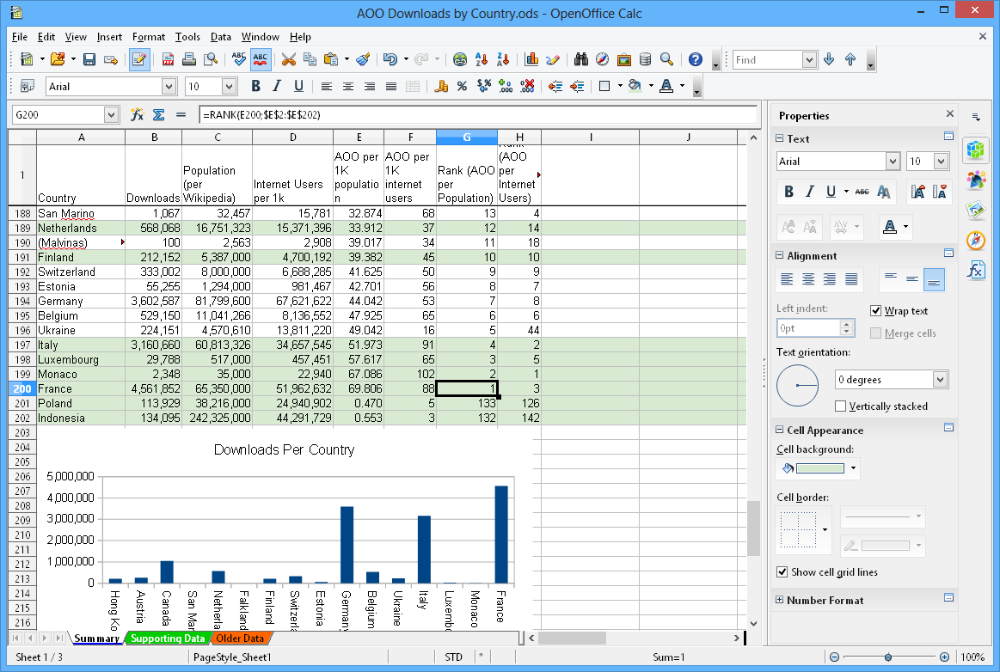Open-source software is a very important tool in the development of IT technologies, so we decided to take a closer look at this topic in our article.
Content:
1. What is open source software
2. Features of open source projects
3. Popular open source software and licenses
4. Open source software benefits
5. Conclusion
From this article, you will learn:
- What are open source projects?
- What criteria must they meet?
- How and when did they appear?
- What well-known IT products belong to open-source?
- What prospects and advantages of open-source software?
- How can it be useful for business?
What are open source projects
The main open-source software feature is that a user can change/modify its source code for any purpose and objectives, without violating the copyright of their developers when proprietary (commercial) software is released only with closed source code.
The open-source code of such programs also allows users to develop new software by borrowing the source code, subject to license compatibility. In addition, the open code makes the software transparent, so anyone can study its structure and make sure that there are no hidden functions and/or vulnerabilities in it.
The term open-source software first appeared in 1998 as an alternative to the previously used term “free software”. According to Bruce Perens and Eric S. Raymond - the programmers who introduced this term, it is more appropriate and less ambiguous.
The difference between these two types of software lies in the priorities and purposes of their use. While the developers of open source projects want to make them open for further development and improvement, supporters of free software are focusing on the free use, distribution, and modification of their programs. Therefore, if all free software is free by default and distributed under free licenses, many open source programs are protected by copyright, although they have open-source code.

Features of open source projects
According to the standards of Open Source Initiative (an organization created to promote and distribute such software), open-source software must meet the following requirements:
- Open-source software licenses should not restrict their free distribution, and they must be free for the end-user
- The source code must be open and available for free distribution and modification. If the software is distributed without source code, then the developer must provide it separately by posting on the Internet or by other means.
- Users can change/modify the software and create their own software products based on its source code. However, they can only distribute them under the terms of the original software license.
- An open-source project license may protect the original source code by restricting the distribution of modified products or requiring their name/version to be different from the original version of the software.
- An open-source product license must be freely available to any user or group of users.
- Open-source software is available for free use in all areas and spheres of activity. The developer has no right to prohibit its commercial use or use in a specific area.
- The license of such software applies to all its users (regardless of their purposes, type of activity, and other factors). No additional licenses are required.
- The license applies to all parts of the open-source software, i.e. to all elements of the software package. If any part of the software is used separately from the distribution kit, then all the terms of its license agreement are applicable to it.
- The license should not in any way restrict third-party programs and applications that are distributed along with open-source projects. For example, it cannot require all accompanying software to be open source or free software.
- Open source licenses cannot be based on any specific technologies or interface styles.
Popular open-source software and licenses
Many open-source programs have a great number of users and have been successfully developing for several decades. The secret of their success lies in the fact that they have become a full-fledged alternative to commercial software, which has guaranteed them high popularity and great prospects. Moreover, Istio and service mesh have gained lots of users and become reliable alternatives to commercial software, ensuring their popularity and bright


For example, WordPress is a very popular free alternative to paid website builders. Open-source made it the most popular CMS on the Internet, accounting for over 60% of the market for such software. In addition, the open-source of this platform allows users to create a wide variety of plugins for it, which significantly expands its basic capabilities.
These are examples of well known free open source projects:
- Open Office suite of office applications (a Microsoft Office analog),
- Gimp - a graphics editor (an alternative to Adobe Photoshop),
- Mozilla Firefox browser.
Moreover, many Google products are open source, and more than 90% of modern companies use this kind of software.
The source code of open-source applications is under so-called “free” licenses, which allow you to use and distribute the software with minimal restrictions, such as the requirement to keep the open-source and other open-source criteria in all modified versions of the program.
The most popular open-source licenses are GNU General Public License (GPL), Apache License 2.0, GNU Library, Mozilla Public License 2.0, BSD License, Common Development and Distribution License, MIT License, and several others.

Benefits of open-source software
- Availability. The absolute majority of open source projects are free for any end-user, including commercial companies.
- Flexibility. Open source allows users to independently make any changes and modify programs for their specific purposes and needs. In addition, most of this software is cross-platform, i.e. compatible with different devices and OS families.
- Quality and safety. Open-source applications are regularly updated and refined by a large community of users from all over the world. The open code allows everyone to find and fix bugs and vulnerabilities in open-source software to make it better, more reliable, and safer than many proprietary analogs.
- Scalability. This unique advantage of open source software makes it possible to be easily scaled according to the needs of the client company, as well as register an unlimited number of users.
- Openness. When choosing open source applications, users are not bound to a specific developer and are not dependent on services or updates. If they wish, they can at any time choose another similar product with the same source code.
Conclusion
Open-source software is one of the most popular and widespread software types that can be freely used, distributed, changed, and modified by users.
Typically, such programs and applications are developed by non-profit organizations or teams of like-minded people, and then they are updated and modified by a large community. Usually, the development of open-source projects is carried out on donations made by their users. The most famous and popular examples of such software are the WordPress CMS platform, the Open Office suite, the Gimp graphics editor, and the Mozilla Firefox web browser.
Do you want to achieve your goals in business, career, and life faster and better? Do it with SaveMyLeads – a tool that will save you from the routine work, and free up additional time for realizing your goals. Test the capabilities of SaveMyLeads for free and enjoy the effectiveness of this tool.
